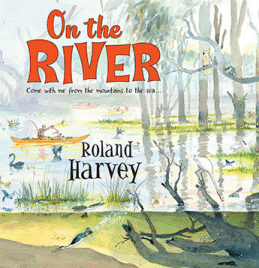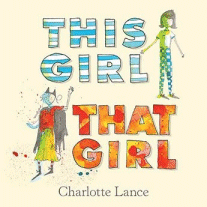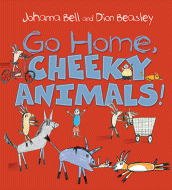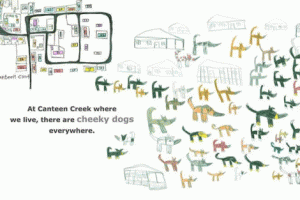On the River
Roland Harvey
Allen & Unwin, 2016
32pp., hbk., RRP $A24.99
9781760112455
“Each year, as the winter snow falls on the mountains, the currawongs head down to the valleys and the mountains are silent under their new white blanket. In spring, as the snows melt and the streams roar, the currawongs return to feast on the new hatches of bogong moths. The mountains explode in a riot of flowers. Here in the foothills, tadpoles practise to be grown-up frogs in crystal-clear ponds, surrounded by wiry grasses and tough little plants that have spent the winter sleeping under the snow. Small fish dart to and fro, hidden beneath overhanging grasses, and brightly coloured beetles go exploring in the green moss beds.
These are the headwaters of the Murray River, where this story begins.”
In this latest addition to his At the Beach series, Roland Harvey takes us on a journey from the mountains to the sea along the waters of the mighty Murray River, the state boundary between New South Wales and Victoria, from its humble beginnings high on the western slopes of the Australian Alps to its junctions with the Murrumbidgee and Darling Rivers and down through South Australia to where it empties itself into the ocean in the Coorong – Storm Boy country. A journey of more than 2500 kilometres that has as many tales as it has twists and turns, a history longer than the river itself and a diversity of flora and fauna richer than any fortune made from its waters.
In his iconic illustrative style and ‘handwritten’ text, Harvey tells the stories of the river as it wends its way through the landscape – there’s Paterson’s meeting with Jack Riley who inspired The Man from Snowy River and whose grave is in the cemetery at Corryong; there’s the hilarious passage through the gorge known as Murray Gates; the weir near Albury Wodonga known as Lake Hume that is a fisherman’s paradise (if it hasn’t all but dried up in a drought): the rich river wetlands that are host to a plethora of amazing bird and river life; the pier at Echuca which was so critical to opening up the inland in the days of wool and paddle-steamers; the historic, ancient Lake Mungo – on and on through double spreads of both history and geography, life and landscape, finally spilling into the sea through its newly re-opened mouth, welcoming the birdlife back but still feeding and watering everything on its winding, wandering journey.
On the River is a celebration of this remarkable river system that is so critical to the well-being of such a huge part of this arid continent. In so many ways it brings life and livings to the people on its shores as well as the creatures within. So important that for many years the Primary English Teachers Association hosted the Special Forever project in conjunction with the Murray-Darling Basin Authority which encouraged the children of the schools on and near the river to explore its significance to their lives through prose, poetry and illustration, the best of which were published annually and distributed to schools. Often the project was the focus of the curriculum for the school for the year. While Special Forever is no longer happening, many of the units of work that evolved from it are available via Scootle including River Highways (R11373), A Sense of Place R11374, A Sense of Time R11379 and a host of other resources that would be the perfect accompaniment to this wonderful book.
Because this river is so important to this nation’s history and geography, On the River belongs in every library collection – not just those of those who live on the river. It is a book that needed to be written and Roland Harvey the perfect person to do it.
A superb addition to Australia: Story Country for all the stories it has to tell – and even more to add if you invite your students to tell theirs.



